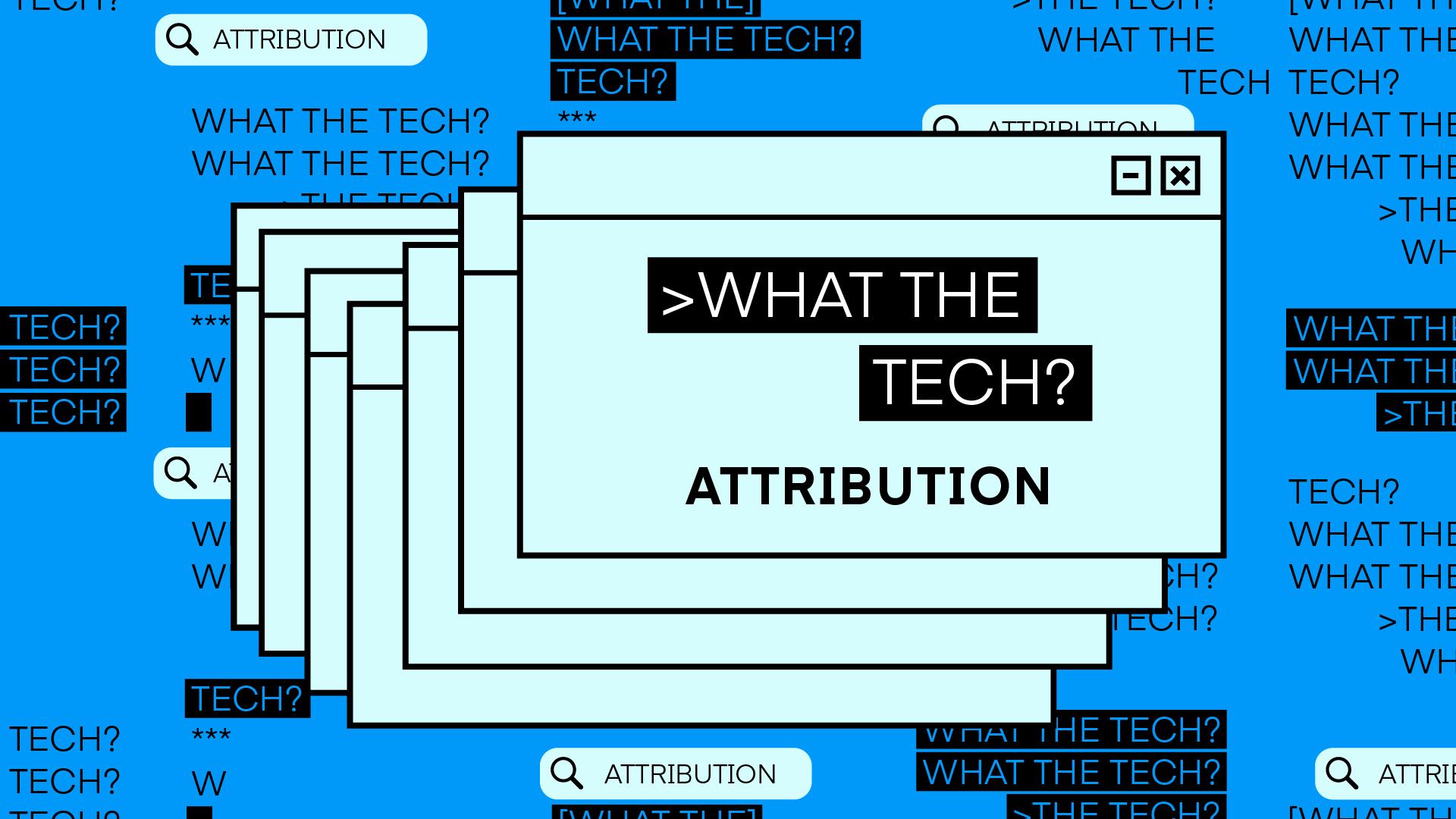What the Tech is attribution?
Attribution determines who gets the credit for an effective ad campaign.

Brands are projected to spend nearly $200 billion on digital advertising this year, and for that kind of money, they want to know that their media dollars are well-spent.
That’s why advertisers spend so much time, money and energy on attribution, the process by which brands evaluate the various components of their advertising campaigns and determine how they contributed to the overall success of the campaign.
Attribution is a complex, sometimes even downright messy, practice. But it’s also a vital part of any high-functioning advertising operation, and its importance only continues to grow as technology advances and media becomes more fractured.
What is attribution?
The name is somewhat literal. Attribution is how brands assign credit for the success of their advertising campaigns.
Which seems simple enough, but in practice, attribution is a difficult, hotly-contested task.
Why’s it important?
Attribution is important because it informs how brands spend their money. If a brand discovers a media channel is delivering great results, they’re likely to increase their ad spend on that channel. Conversely, if a channel is underperforming, brands will pull back on their media spend. Attribution helps advertisers make those decisions and allocate their advertising budgets more efficiently.
Why’s it so complicated?
Attribution is complicated because contemporary media is complicated.
Brands have a galaxy’s worth of websites and mobile apps to choose from when executing an ad campaign. Oftentimes, brands won’t even select specific websites for their campaigns, instead of using programmatic ad technology — such as demand-side and supply-side platforms — to buy ad space across a collection of sites. As such, a digital ad campaign can span thousands of different ad platforms.
Given how vast and disparate digital ad campaigns are, it can be exceedingly difficult to calculate how influential each distinct aspect of the campaign was and attribute credit accordingly.
Isn’t digital media supposed to be easier to measure?
Yes, and it is.
Back in the day, brands had only a few mediums to choose from (e.g. print, radio, TV and out-of-home) when running an ad campaign. While the media ecosystem was less fractured back then, it was also harder to measure. Brands and agencies had to go to great lengths to assess the effectiveness of their ads, such as conducting laborious brand lift studies or focus groups, neither of which scale well.
Digital advertising, however, generates enormous amounts of data about how consumers interact with advertising, allowing advertisers to determine attribution with greater precision.
What kinds of attribution are there?
One of the most common, most maligned forms of attribution is last-click attribution (it’s also referred to as last-touch attribution, but they indicate the same thing.) With last-click, attribution is given to whichever ad the consumer interacted with last.
Let’s use an example: Say there’s a direct-to-consumer bed sheet brand running a campaign targeted at millennial-age, college-educated, urban professionals. The campaign includes sponsored posts on Instagram, sponsored product listings on Amazon and a bunch of display ads purchased through a DSP.
Jane Doe sees the brand’s Instagram ads and a few of its display ads while perusing the web. Two days later, she searches for “bedsheets” on Amazon and sees the brand’s sponsored product listing. She clicks on the ad and purchases a pair of the brand’s cushy linens.
With last-click attribution, the Amazon listing would get all the credit for persuading the consumer to buy the product.
Why’s that controversial?
The problem with last-click attribution is it disregards all the other ads that might have swayed the consumer to make a purchase. Sure the consumer clicked on the Amazon ad, but maybe the Instagram ad had a bigger effect on the consumer’s decision-making.
This is why brands have started to embrace more nuanced attribution methods such as multi-click attribution and incrementality. Incrementality aims to solve the last-click attribution problem by measuring all the different components of a campaign and determining their incremental value.
Assessing incrementality is a difficult process, one that involves rigorous A/B testing, but for a brand looking to spend its advertising dollars more wisely, the insights are invaluable.